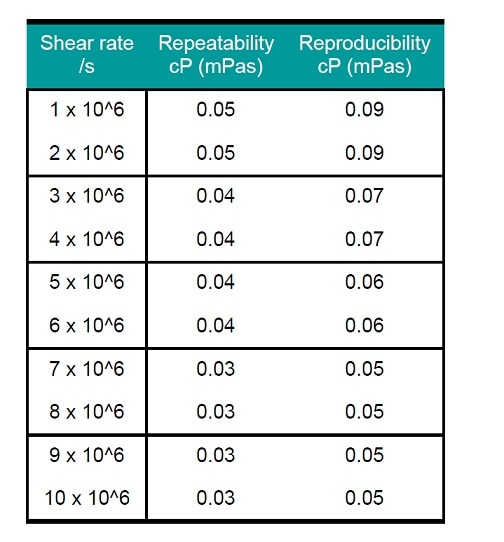USV Ultra Shear Viscometer
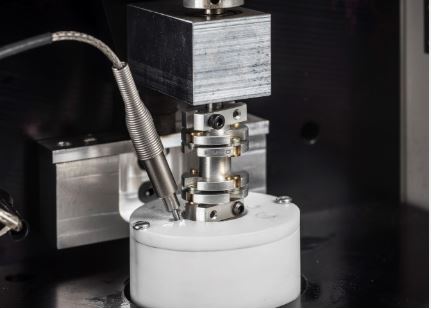
Product Name
USV Ultra Shear Viscometer

This rotary viscometer covers HTHS viscosity, and fully automatically measures temperature/shear rate distribution at a shear rate of 10⁶s⁻¹ to 10⁷s⁻¹ and a temperature of 40 to 150°C.
*Click here to download more detailed materials (English/Japanese)➡ *Japanese website
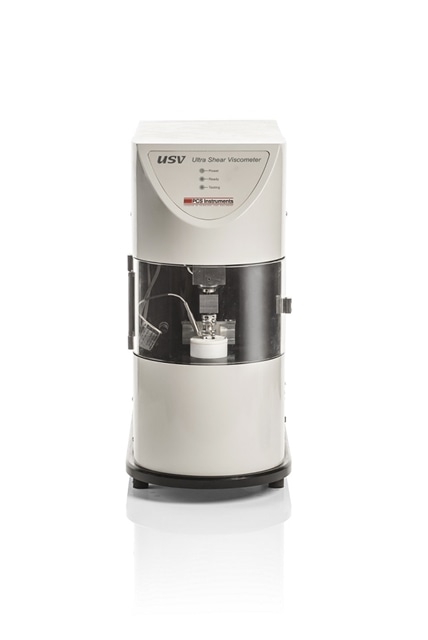
Overview
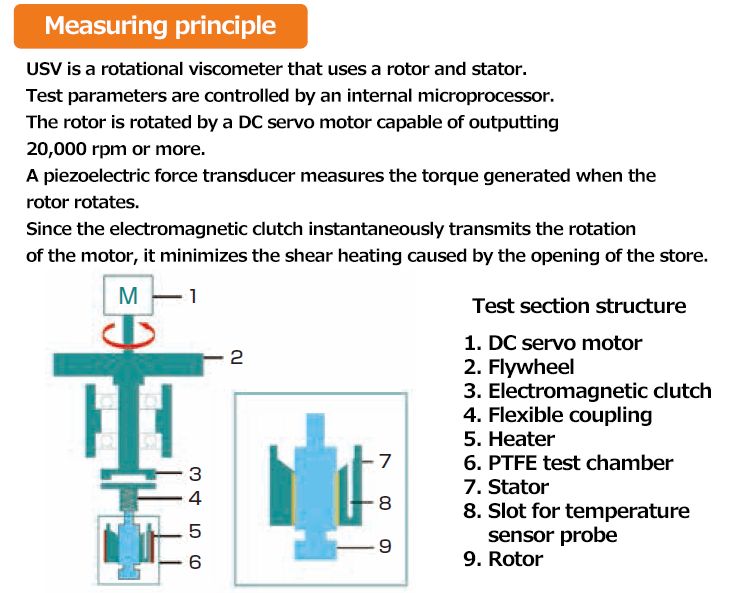
- It covers HTHS viscosity measurement and is fully automatic and measures at a shear rate of 10⁶s⁻¹ to 10⁷s⁻¹ and a temperature of 40-150°C.
- The simple software makes it easy to create, save, recall, and calibrate profiles.
- Test results are plotted on software graphs at any time and can be displayed as below.
Viscosity vs. Shear rate
Shear stress vs. Shear rate - The measurement results are saved as a text file and can be edited with spreadsheet software. (It is also possible to print the graph on the software directly.)
Characteristics
- Shear viscosity is measured by a piezoelectric force transducer, which is the torque produced during rotor rotation.
- The rotor and stator are made of a single tungsten carbide material, which suppresses thermal expansion due to heating and maintains a constant gap of approximately 1 μm.
- Since calibration is not required for each test sample exchange, there is no troublesome operation.
Specification
|
Shear rate range |
10⁶s⁻¹ to 10⁷s⁻¹ |
|---|---|
|
Test sample volume |
5ml |
|
Flushing time |
10minutes |
|
Temperature accuracy |
+/- 0.1℃ |
|
Main temperature sensor |
Platinum RTD |
|
Alarm temperature sensor |
Platinum RTD |
|
Power supply |
100-240V, 50/60Hz, 450VA |
|
Dimension |
460mm(h)×200mm(w)×460mm(d) |
|
Weight |
22kg |
Measurement of Engine Oil
As modern automobile engines become faster, the demands placed on engine oil performance increase. Higher speed engines must run with lower viscosity engine oils to reduce friction losses and improve overall engine efficiency.
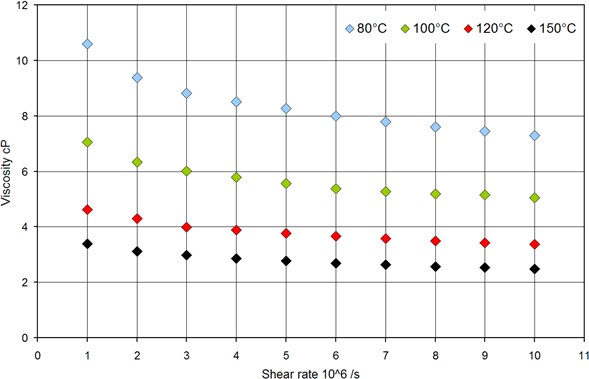
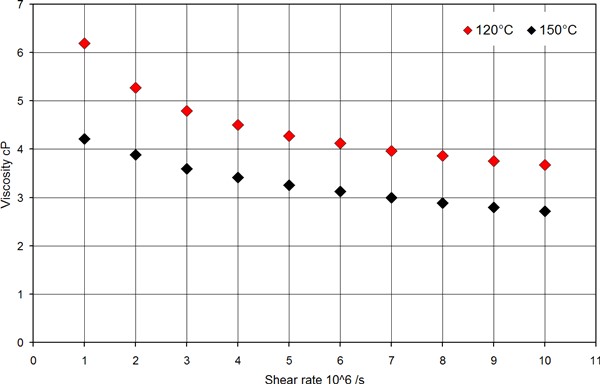
Test Accuracy
The average of 5 measurements at each measurement point are taken.
These provide reproducibility within 2%.
